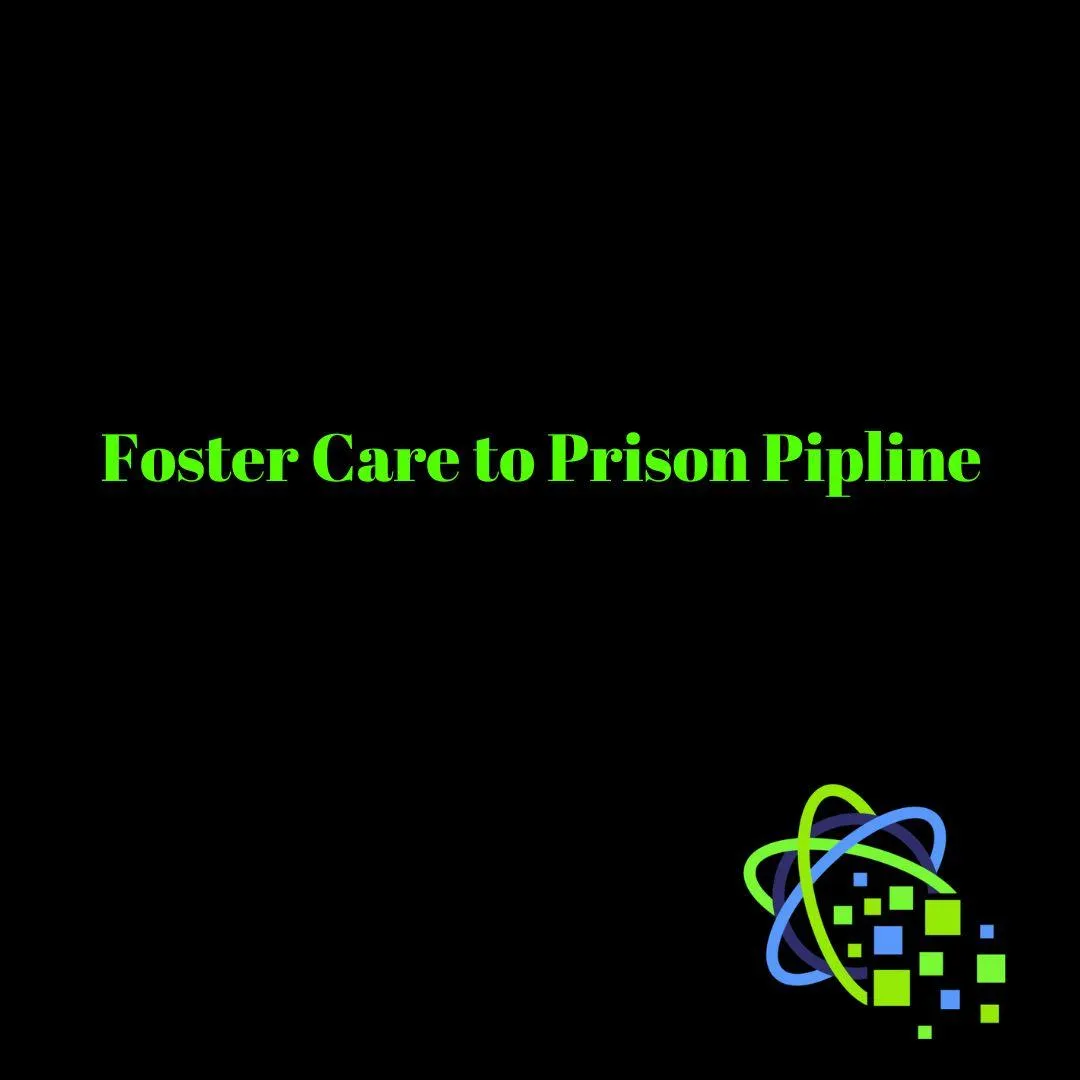
Foster Care to Prison Pipeline
“"Breaking the foster care to prison pipeline requires a comprehensive approach that addresses the root causes of this cycle, including trauma, instability, and educational disparities. By providing support and stability, we can give foster children the best chance to succeed in life and break free from this destructive cycle.".”
Foster Care to Prison Pipeline
Foster care is a system designed to protect children who have been abused, neglected, or abandoned by their parents. While foster care can provide a safe and supportive environment for children in need, it can also lead to negative outcomes for many of these children. One of the most concerning issues associated with foster care is the "foster care to prison pipeline."
The foster care to prison pipeline is a term used to describe the trend of foster children being more likely to end up in prison than their non-foster peers. The pipeline is a result of a number of factors that contribute to foster children being at a higher risk of experiencing the types of traumas and disadvantages that can lead to criminal behavior.
One of the primary factors that contribute to the foster care to prison pipeline is the high incidence of abuse and neglect experienced by children in the foster care system. According to research, children in foster care are more likely to experience physical, emotional, and sexual abuse than children who are not in foster care. This trauma can lead to a range of mental health issues, including anxiety, depression, and post-traumatic stress disorder, all of which can increase the risk of criminal behavior.
Another factor that contributes to the foster care to prison pipeline is the instability that many foster children experience. Foster children are often moved from home to home, sometimes multiple times a year, which can lead to a lack of stability in their lives. This instability can make it difficult for foster children to form meaningful relationships, establish a sense of identity, and develop a sense of belonging. Without these key components, foster children may be more likely to engage in risky behaviors and seek out negative peer relationships, which can lead to criminal behavior.
Additionally, many foster children experience educational disadvantages that can contribute to the foster care to prison pipeline. Children in foster care are more likely to experience gaps in their education due to moves, disruptions in their schooling, and the trauma they have experienced. As a result, they may struggle academically and be more likely to drop out of school, which can lead to a higher risk of criminal behavior.
Finally, the foster care to prison pipeline is also fueled by the fact that many children in the foster care system are never adopted. When children age out of the foster care system, they are often left to fend for themselves without the support of a stable family environment. This lack of support can make it difficult for these children to succeed in life, leading to a higher risk of homelessness, poverty, and criminal behavior.
In conclusion, the foster care to prison pipeline is a serious issue that needs to be addressed. While the foster care system is designed to protect children in need, it is clear that improvements need to be made to ensure that these children have the best chance of success. By providing stable and supportive homes, addressing educational disparities, and focusing on the mental health needs of foster children, we can work to break the cycle of the foster care to prison pipeline and give these children the opportunities they deserve.

Foster Care to Prison Pipeline
“"Breaking the foster care to prison pipeline requires a comprehensive approach that addresses the root causes of this cycle, including trauma, instability, and educational disparities. By providing support and stability, we can give foster children the best chance to succeed in life and break free from this destructive cycle.".”
Foster Care to Prison Pipeline
Foster care is a system designed to protect children who have been abused, neglected, or abandoned by their parents. While foster care can provide a safe and supportive environment for children in need, it can also lead to negative outcomes for many of these children. One of the most concerning issues associated with foster care is the "foster care to prison pipeline."
The foster care to prison pipeline is a term used to describe the trend of foster children being more likely to end up in prison than their non-foster peers. The pipeline is a result of a number of factors that contribute to foster children being at a higher risk of experiencing the types of traumas and disadvantages that can lead to criminal behavior.
One of the primary factors that contribute to the foster care to prison pipeline is the high incidence of abuse and neglect experienced by children in the foster care system. According to research, children in foster care are more likely to experience physical, emotional, and sexual abuse than children who are not in foster care. This trauma can lead to a range of mental health issues, including anxiety, depression, and post-traumatic stress disorder, all of which can increase the risk of criminal behavior.
Another factor that contributes to the foster care to prison pipeline is the instability that many foster children experience. Foster children are often moved from home to home, sometimes multiple times a year, which can lead to a lack of stability in their lives. This instability can make it difficult for foster children to form meaningful relationships, establish a sense of identity, and develop a sense of belonging. Without these key components, foster children may be more likely to engage in risky behaviors and seek out negative peer relationships, which can lead to criminal behavior.
Additionally, many foster children experience educational disadvantages that can contribute to the foster care to prison pipeline. Children in foster care are more likely to experience gaps in their education due to moves, disruptions in their schooling, and the trauma they have experienced. As a result, they may struggle academically and be more likely to drop out of school, which can lead to a higher risk of criminal behavior.
Finally, the foster care to prison pipeline is also fueled by the fact that many children in the foster care system are never adopted. When children age out of the foster care system, they are often left to fend for themselves without the support of a stable family environment. This lack of support can make it difficult for these children to succeed in life, leading to a higher risk of homelessness, poverty, and criminal behavior.
In conclusion, the foster care to prison pipeline is a serious issue that needs to be addressed. While the foster care system is designed to protect children in need, it is clear that improvements need to be made to ensure that these children have the best chance of success. By providing stable and supportive homes, addressing educational disparities, and focusing on the mental health needs of foster children, we can work to break the cycle of the foster care to prison pipeline and give these children the opportunities they deserve.

Foster Care to Prison Pipeline
“"Breaking the foster care to prison pipeline requires a comprehensive approach that addresses the root causes of this cycle, including trauma, instability, and educational disparities. By providing support and stability, we can give foster children the best chance to succeed in life and break free from this destructive cycle.".”
Foster Care to Prison Pipeline
Foster care is a system designed to protect children who have been abused, neglected, or abandoned by their parents. While foster care can provide a safe and supportive environment for children in need, it can also lead to negative outcomes for many of these children. One of the most concerning issues associated with foster care is the "foster care to prison pipeline."
The foster care to prison pipeline is a term used to describe the trend of foster children being more likely to end up in prison than their non-foster peers. The pipeline is a result of a number of factors that contribute to foster children being at a higher risk of experiencing the types of traumas and disadvantages that can lead to criminal behavior.
One of the primary factors that contribute to the foster care to prison pipeline is the high incidence of abuse and neglect experienced by children in the foster care system. According to research, children in foster care are more likely to experience physical, emotional, and sexual abuse than children who are not in foster care. This trauma can lead to a range of mental health issues, including anxiety, depression, and post-traumatic stress disorder, all of which can increase the risk of criminal behavior.
Another factor that contributes to the foster care to prison pipeline is the instability that many foster children experience. Foster children are often moved from home to home, sometimes multiple times a year, which can lead to a lack of stability in their lives. This instability can make it difficult for foster children to form meaningful relationships, establish a sense of identity, and develop a sense of belonging. Without these key components, foster children may be more likely to engage in risky behaviors and seek out negative peer relationships, which can lead to criminal behavior.
Additionally, many foster children experience educational disadvantages that can contribute to the foster care to prison pipeline. Children in foster care are more likely to experience gaps in their education due to moves, disruptions in their schooling, and the trauma they have experienced. As a result, they may struggle academically and be more likely to drop out of school, which can lead to a higher risk of criminal behavior.
Finally, the foster care to prison pipeline is also fueled by the fact that many children in the foster care system are never adopted. When children age out of the foster care system, they are often left to fend for themselves without the support of a stable family environment. This lack of support can make it difficult for these children to succeed in life, leading to a higher risk of homelessness, poverty, and criminal behavior.
In conclusion, the foster care to prison pipeline is a serious issue that needs to be addressed. While the foster care system is designed to protect children in need, it is clear that improvements need to be made to ensure that these children have the best chance of success. By providing stable and supportive homes, addressing educational disparities, and focusing on the mental health needs of foster children, we can work to break the cycle of the foster care to prison pipeline and give these children the opportunities they deserve.
